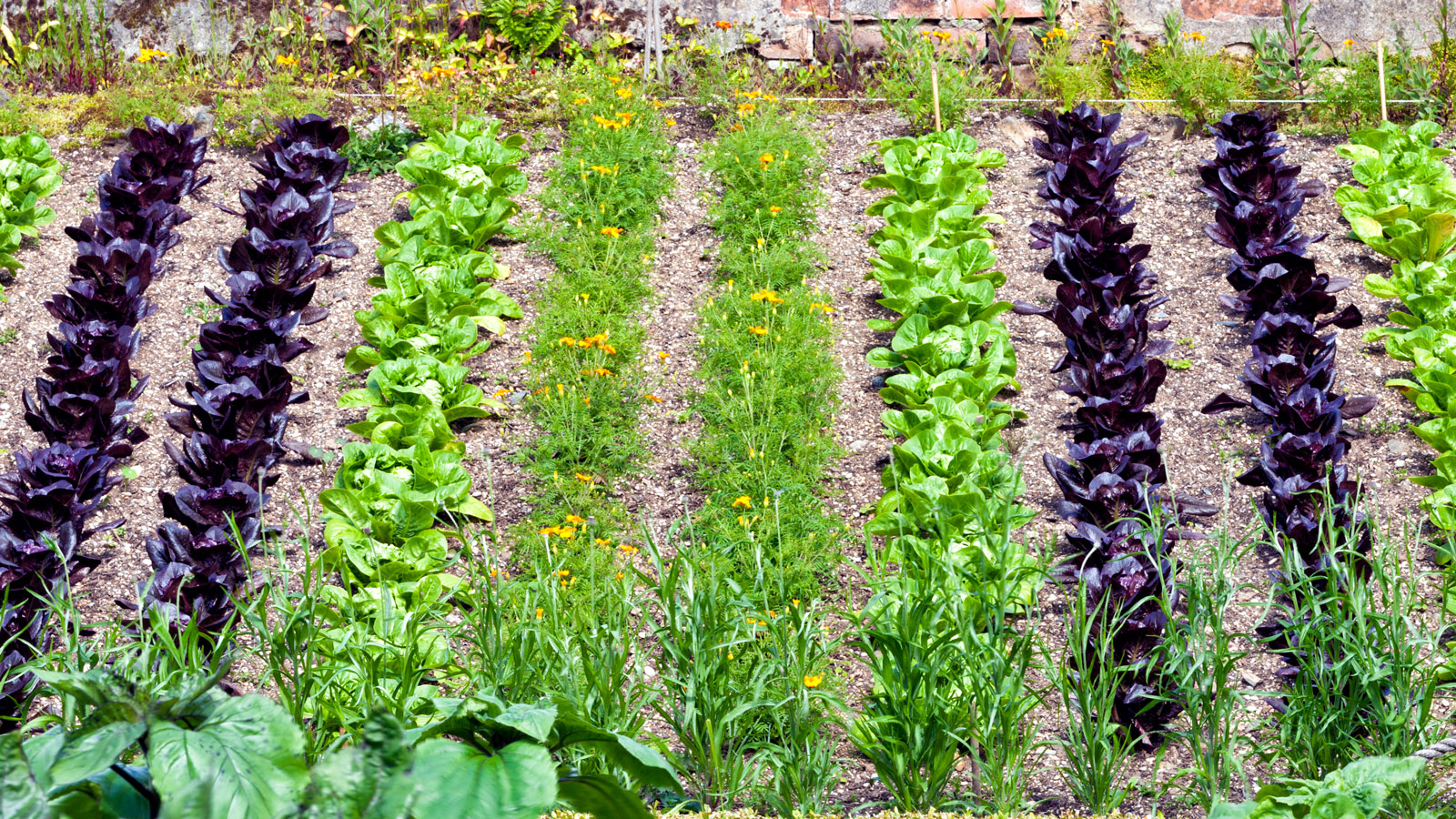
Those annoying yet abundant pests that can destroy plants and all your good work in the garden are a big problem in summer if you're not vigilant. Now is the time to start checking plants for signs that pests are laying eggs or setting up home on leaves in preparation for a bumper feed once summer comes.
Controlling the spread of plant pests is important for beautiful ornamental plants and a healthy vegetable garden. As well as eating and damaging plants and vegetable garden crops, they also help spread various viral, fungal and bacterial pathogens. If infestations get out of control it may be necessary to resort to chemical methods, which harm biodiversity in the garden and endanger pollinators like bees and butterflies.
Monitoring your vegetable garden ideas regularly will ensure you alert to pest problems early enough to prevent major damage. This way, you'll be able to use natural methods to zap them before chemical intervention is necessary. Find out what you can do to prevent pests that can destroy plants from taking over your backyard. We show you how to identify signs of plant disease, and use easy natural methods to rid your yard of the most common damaging bugs.
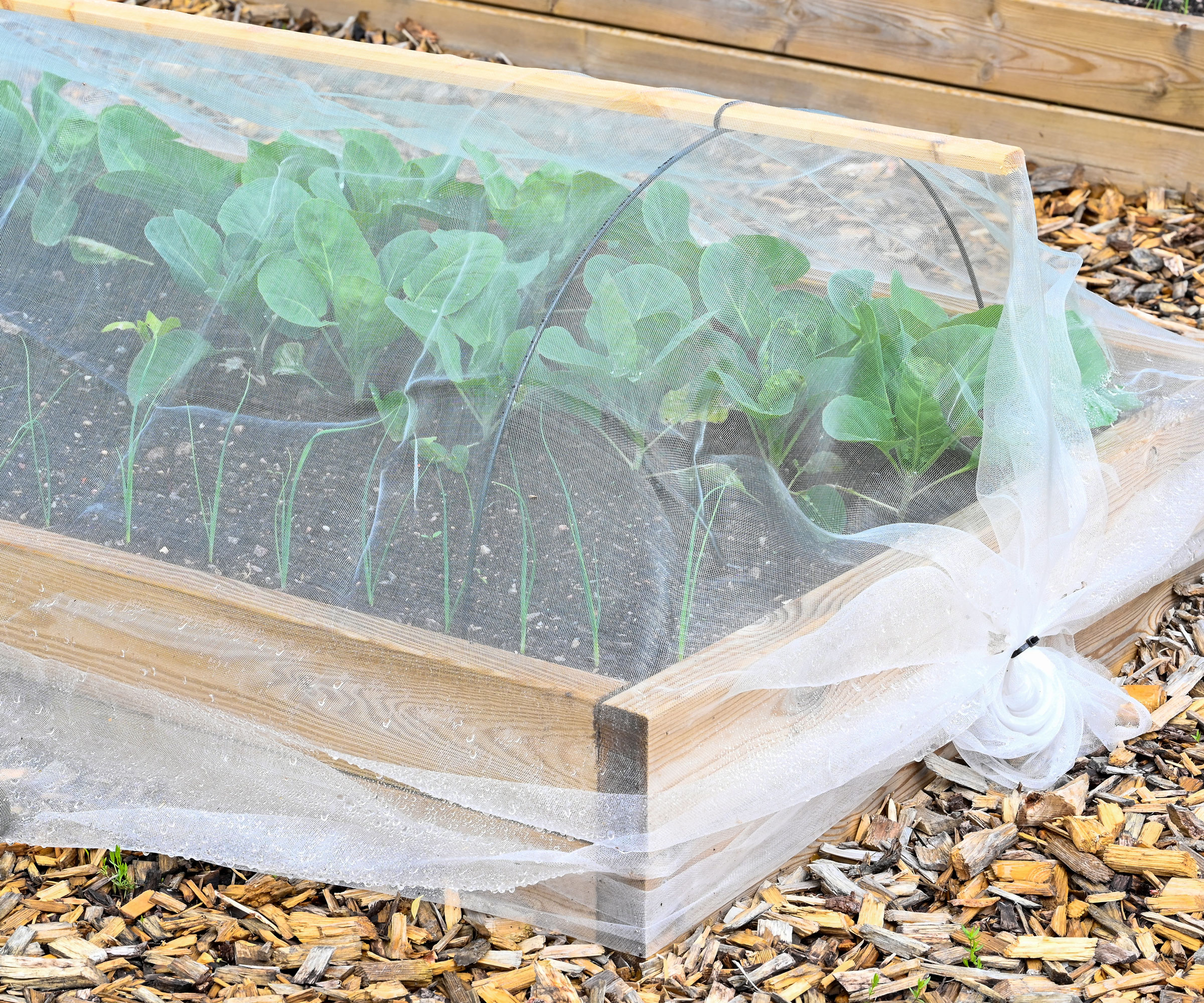
8 common plant pests and how to deal with them
It's best to use a three-tier natural approach to tackle most pests that can destroy plants. This means checking your plants regularly for signs of infestation and if you find something dealing with it immediately in the most gentle way.
Pick insects off by hand wherever possible, or alternatively use a jet of water to dislodge them or a natural insect spray to zap them.
Next trim off any damaged leaves to prevent the spread from one plant to another. Finally, always grow a selection of companion planting that attract pest predators such as ladybugs and lacewings.
1. Aphids
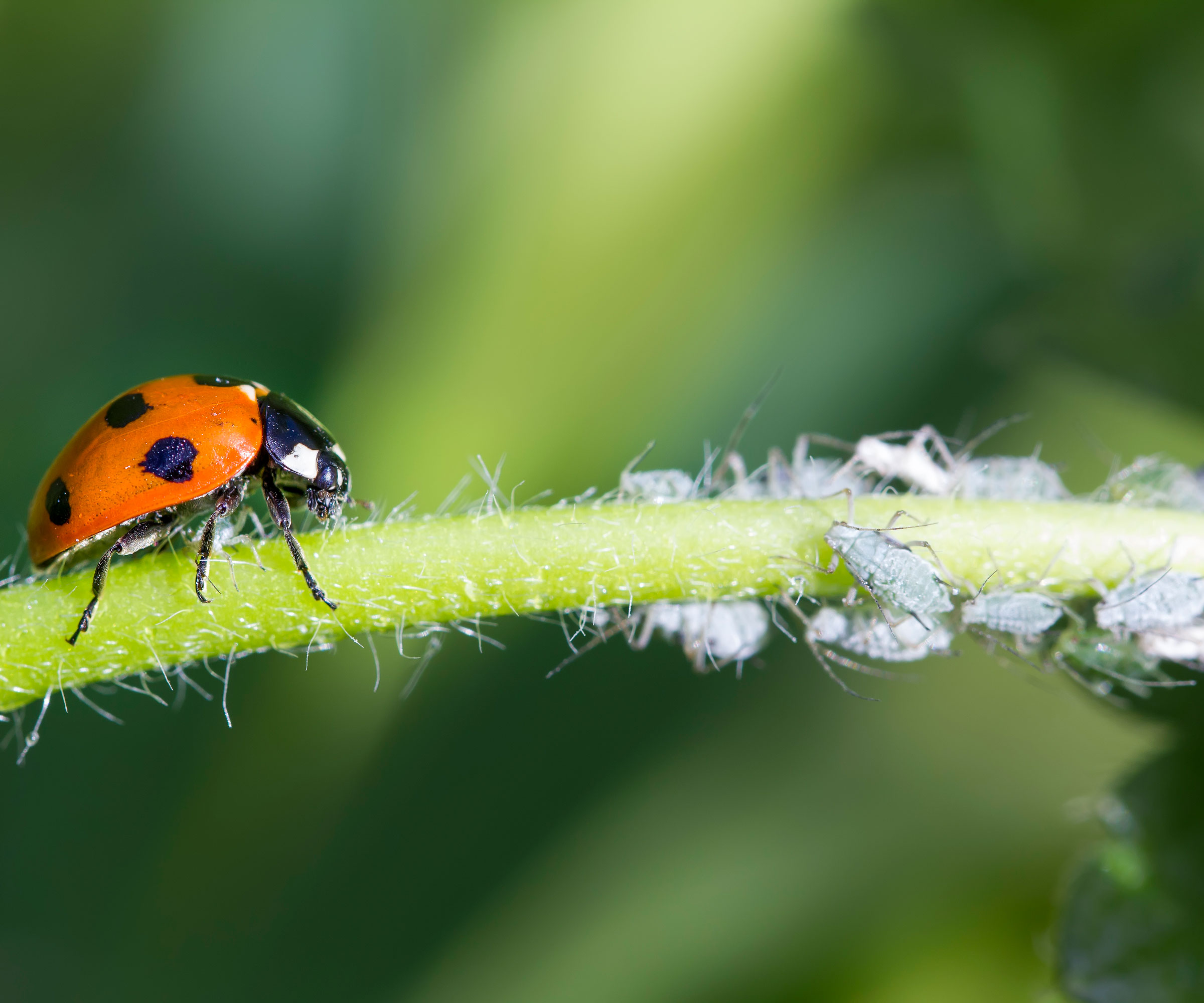
'Aphids are the bane of every gardener's existence,' says plant expert Resh Gala, author of Vegetable Gardening Made Easy, available from Amazon. 'They are one of the most common pests you'll find in a veggie garden. These small insects suck the juices from your plants, stunting their growth, turning leaves yellow and even, in extreme cases, killing your plant.' Aphids also spread viral diseases from plant to plant.
When aphid numbers get high, natural enemies such as ladybugs, lacewings, and soldier beetles enjoying feeding on them, which eliminates the need for pesticides. Companion planting also attracts the good bugs. Plant aromatic herbs like mint, basil, and cilantro among susceptible crops. Meanwhile aphids themselves are drawn to nasturtiums, marigolds and calendula, so if you plant these it gives you time to find out how to get rid of aphids before they move on to your crops.
If you're facing a larger infestation it's a good idea to spray your plants. 'For a targeted approach, use a blend of neem oil and mild dish soap,' says certified organic gardener Michael O’Brien of LA-based Hommes + Gardens. 'This botanical concoction disrupts the life cycles of aphids without harming beneficial insects or compromising the integrity of your harvest.'
Simply mix a tablespoon of neem oil with a few drops of dish soap in a spray bottle filled with water. Apply liberally to affected plants, ensuring thorough coverage. Repeat every 7-10 days, especially after rain or irrigation, for best results.
2. Spider mites
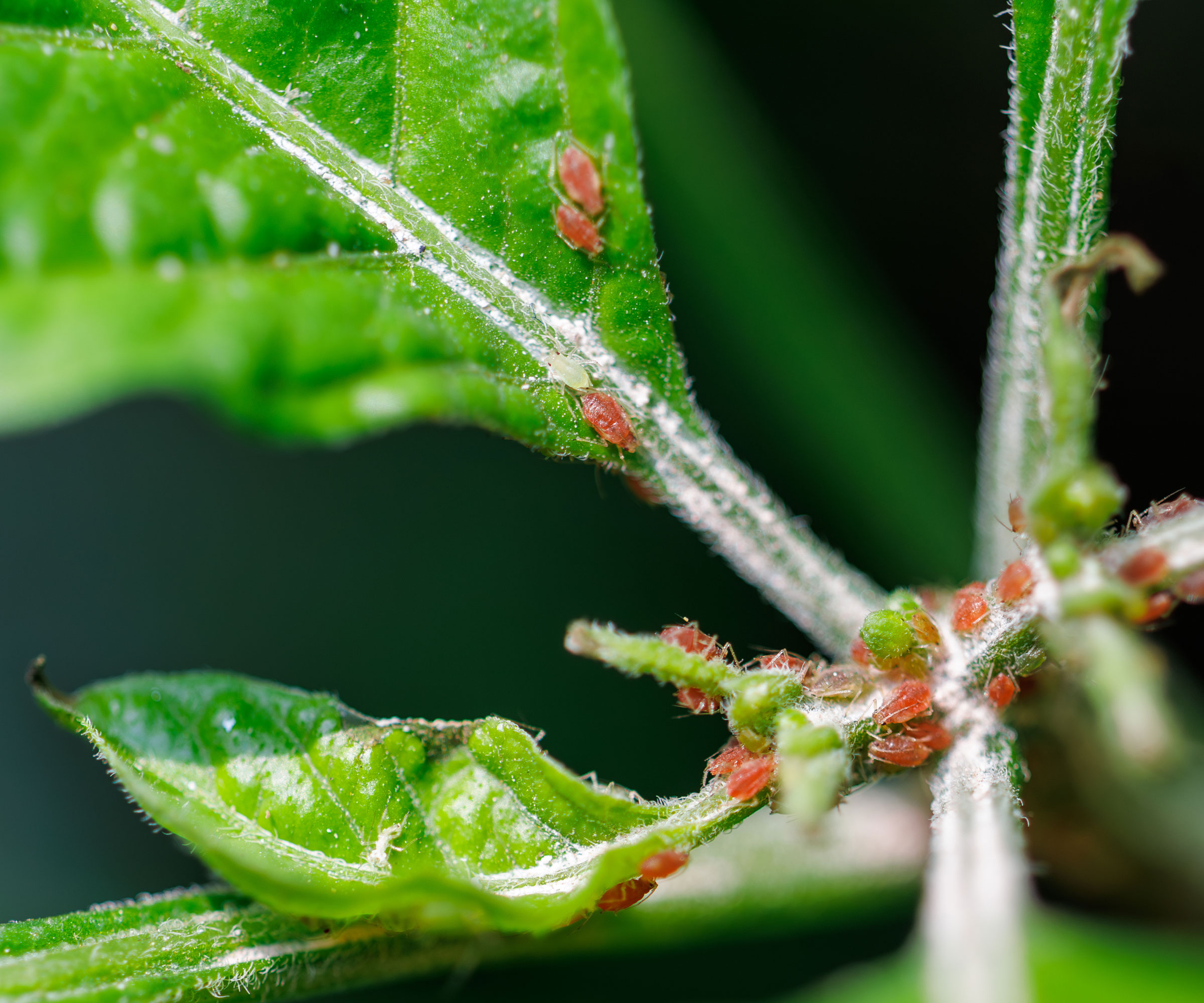
Another common garden pest is the spider mite and this one is especially tricky to deal with as they are almost impossible to see. They are most prolific during hot spells in summer, when they enjoy attacking a wide range of flowers (especially roses and fuchsias), fruit (such as apples and strawberries) and vegetables (for example tomatoes and beans) in the garden.
'They are as small as a grain of sand and some people even use a magnifying glass to find them,' says Resh Gala. 'They damage the plant by sucking out the sap and life juices, then leaves start turning yellow and dull. Spider mites are notorious for multiplying rapidly and moving together in colonies, almost like an army.'
There are several natural methods to get rid of spider mites. 'The most effective remedy is to mix 1 part rubbing alcohol with 3 parts water,' says Resh. 'Dab on a cotton ball and wipe it over the affected leaves and stem. This will kill the mites on contact. Leave on for an hour then rinse the residue and dead mites away by hosing them off.'
3. Fruit flies
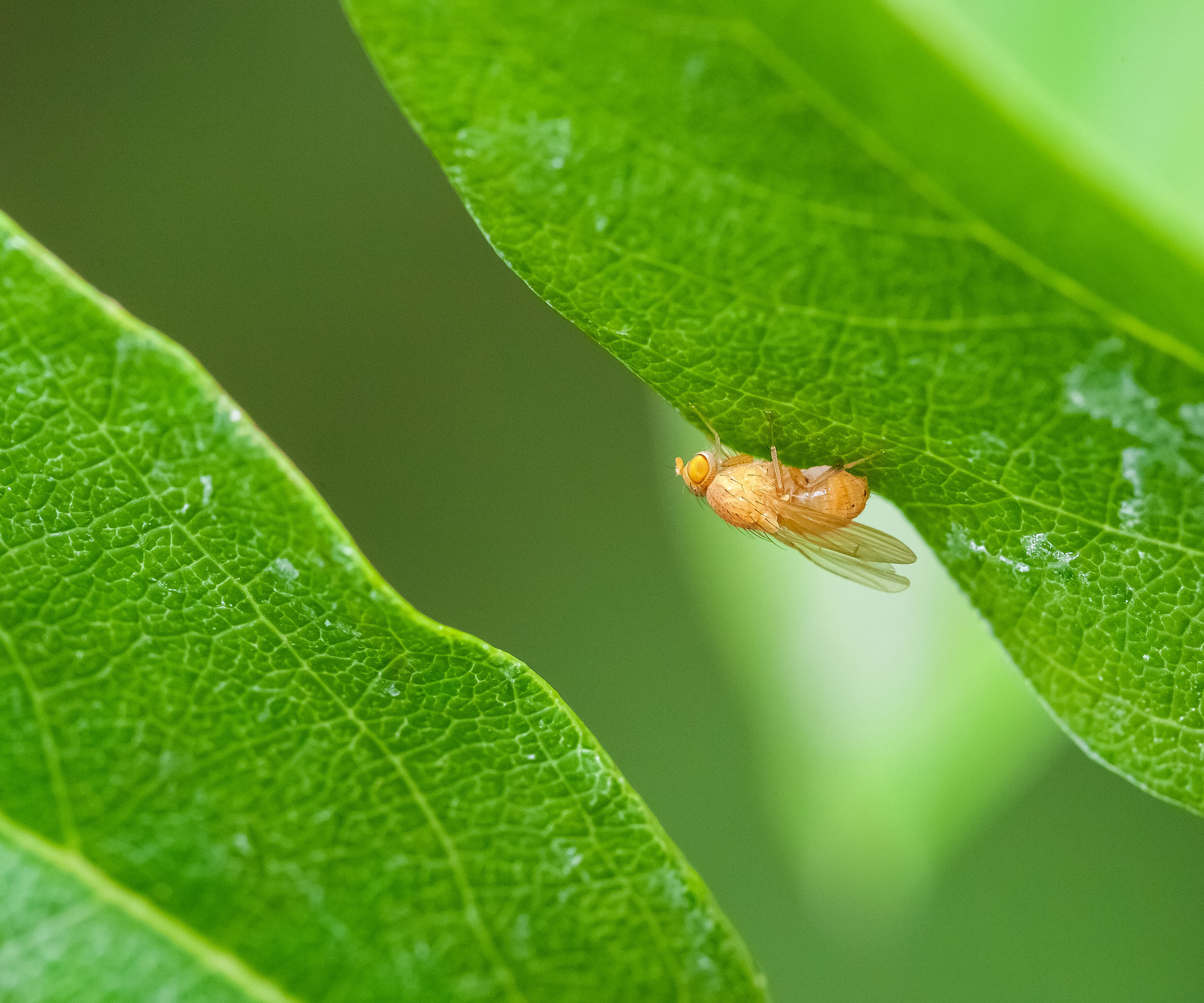
Fruit flies can be a problem when the weather warms up. They overwinter in garden debris, so the problem often stems from decaying fruit, vegetables or other plant material either in the compost or elsewhere in the yard, as well as being a nuisance in the house.
Fruit fly damage results from them laying eggs in ripe and maturing fruit. This causes physical damage to the surface of fruit. A clean garden area will help when you're controlling fruit flies. Make sure your compost is contained with a lid or other cover to reduce the number of flies, and find out how to get rid of fruit flies in the house too.
'Fruit flies can quickly become a nuisance in the garden as well as the kitchen,' says Michael O’ Brien. 'To control them effectively, ensure garbage bins are tightly sealed to eliminate potential breeding sites.'
For a simple DIY solution, Michael suggests creating a fruit fly trap using a small jar filled with apple cider vinegar. 'Cover the opening with plastic wrap secured by a rubber band and poke a few holes in the plastic wrap for flies to enter. Dispose of trapped flies regularly to prevent further infestation.'
4. Flea beetles
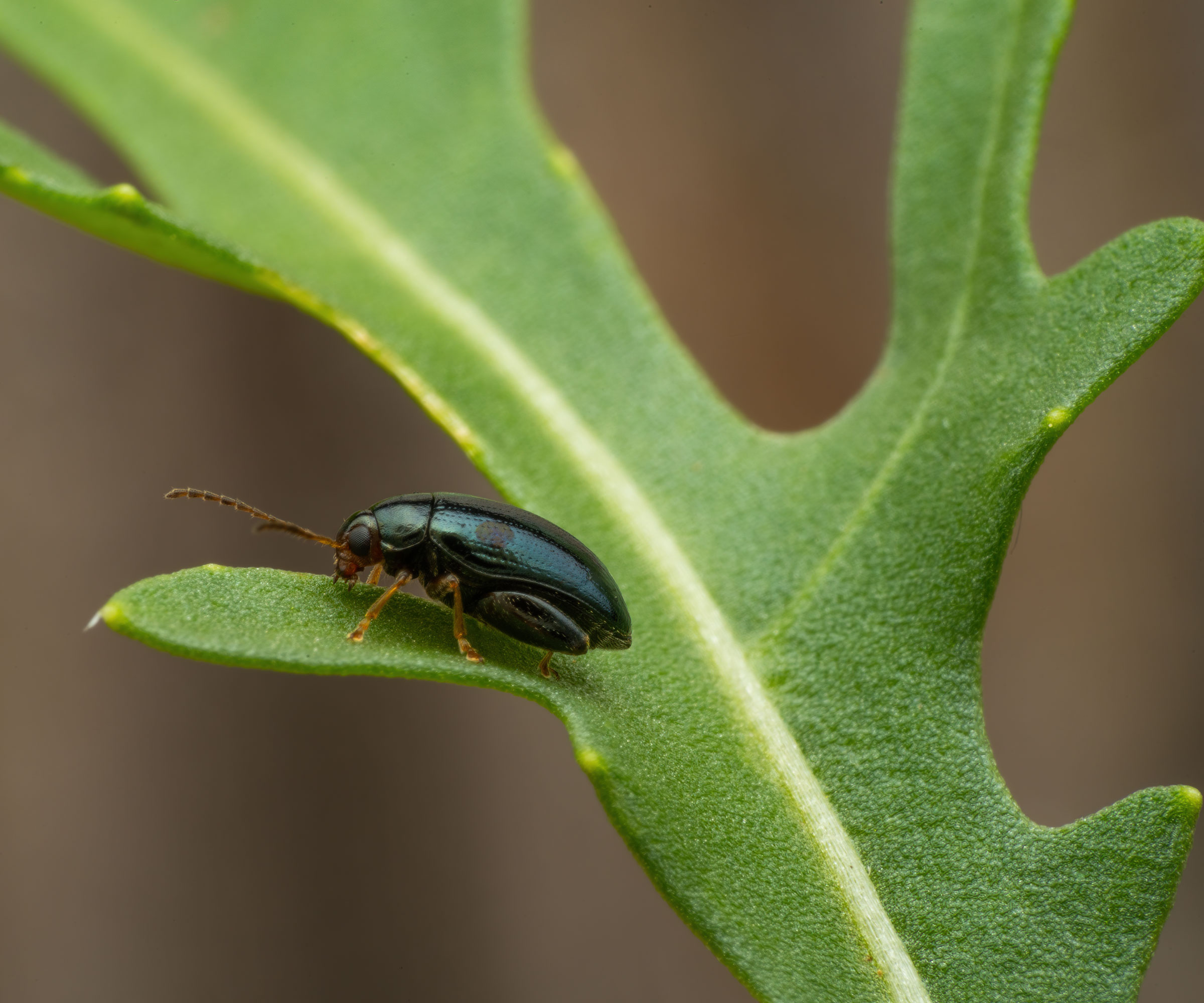
'If you see tiny black insects all over your eggplant, tomato or radish plants and the leaves have numerous small holes in them, then it's most likely that the pesky flea beetle is the culprit,' says Resh Gala.
As well as plants from the nightshade family such as such as potatoes, tomatoes, eggplants and peppers, flea beetles love to feed on the leaves of brassicas too, leaving a trail of unsightly chewed holes. Young plants and seedlings are particularly susceptible to flea beetle damage, and severe infestations will actually kill off the plants as they won't be able to photosynthesize properly.
There are several natural remedies you can use to control flea beetles in your garden. Try using row covers or insect netting over young plants. 'If you've experienced flea beetle problems in the past, then it's likely they will come back,' says Resh. 'The best strategy is to cover susceptible varieties with insect netting or row covers when you plant seedlings. This blocks beetles from landing on the plants.'
Choose an insect barrier netting like this one from Amazon as it's see-through so doesn't affect the growing rate of your plants.
5. Caterpillars
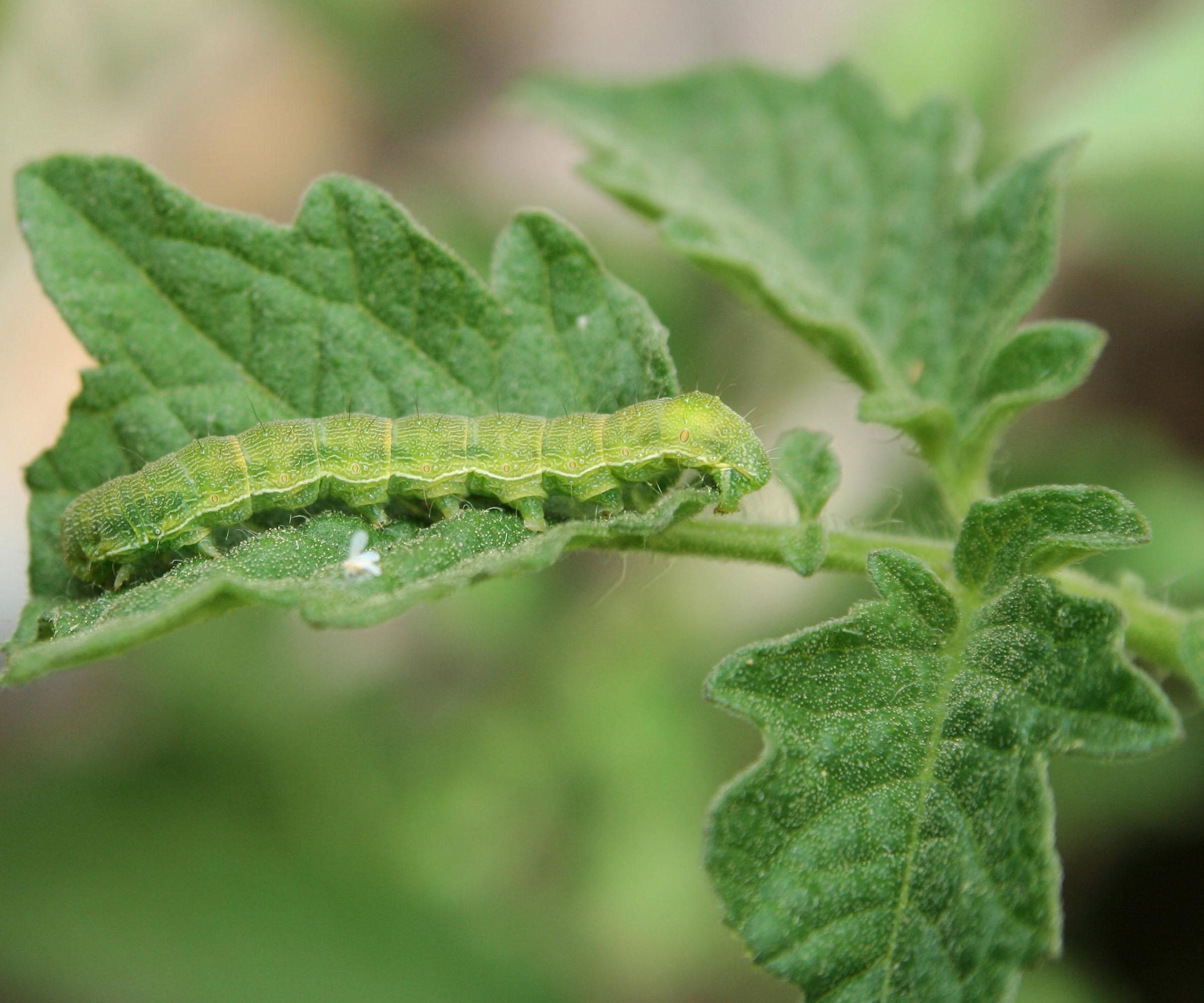
There are many varieties of caterpillar in the different regions of the US but the one thing they all have in common is their love for chewing their way through leaves in the garden in late summer and early fall. Caterpillars feed on a variety of plants, but are particularly known for their love of brassicas like cabbage and kale.
'It’s a good idea to use the least toxic method to control pests on edible plants,' says gardening expert Greg Key. 'Organic methods work well as a preventative, but not so well as a curative. Cabbage loopers [pale green varieties of caterpillar with stripes on their backs that love to eat chard, kale and lettuce] can cause major damage.'
The good news is there are lots of natural predators to help deal with the problem. Birds, lacewings, ground beetles, and parasitic flies and wasps all play a role in keeping the caterpillar population down naturally and dealing with pests that can wreck your plants.
Another easy solution can be as simple as spending some quality time in your garden removing pests from your plants by hand, wearing gloves to do so.
A combination of beneficial predators plus picking them off by hand yourself is often enough to control pests that can wreck your plants. Be vigilant too. If you see beautiful cabbage white butterflies in your yard you can be sure they will be laying their eggs on leaves that will hatch into caterpillars in no time. So be sure to deal with those eggs by removing them.
6. Japanese beetle
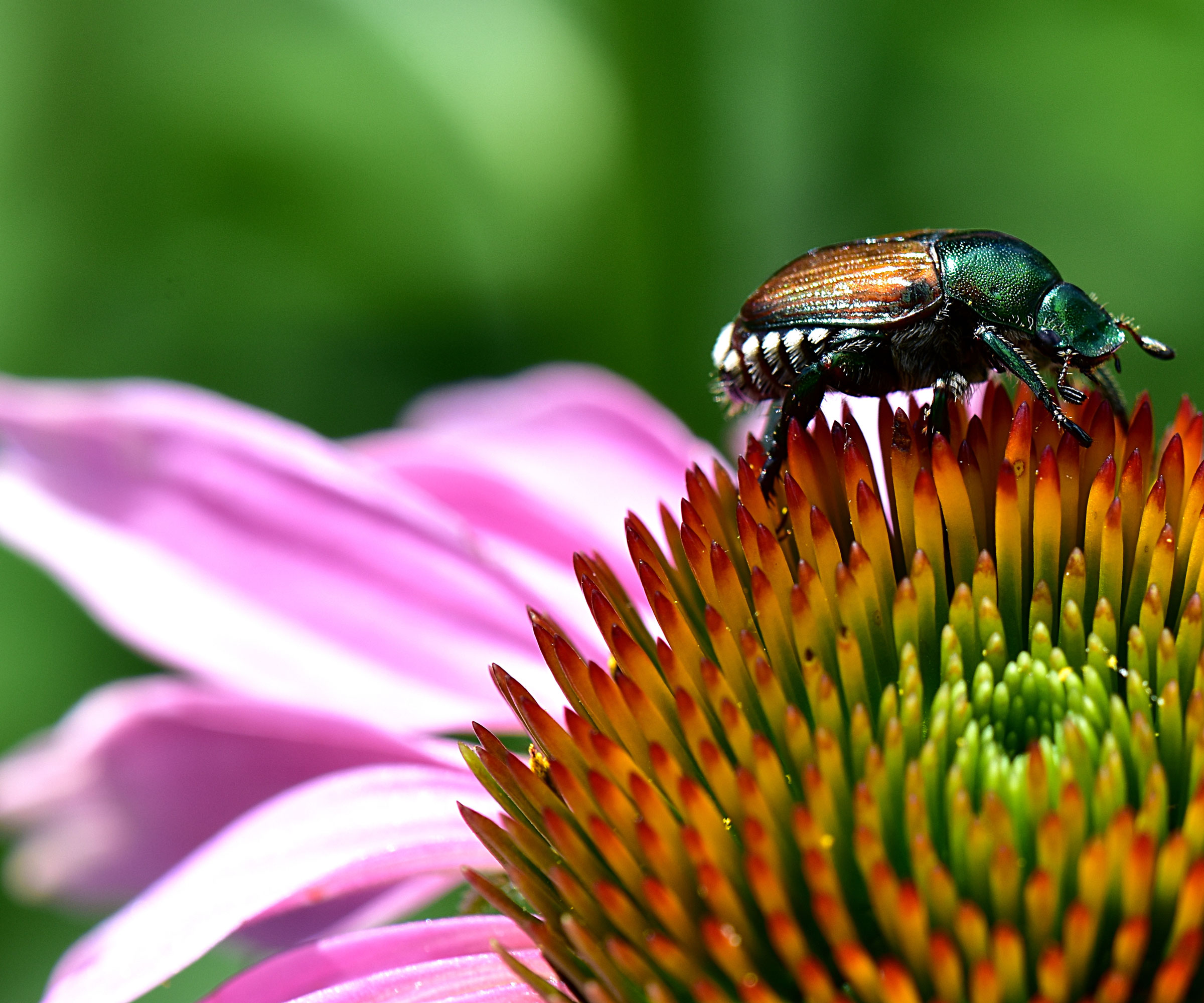
Japanese beetles damage many varieties of vegetables, flowers, and fruit. They skeletonize leaves and flowers, eventually stripping plants of their leaves completely.
'Japanese beetles are a major fruit tree pest,' says Emma Grace Crumbley, entomologist at Mosquito Squad. 'Rather than overwintering in the fruit itself, Japanese beetle grubs take refuge in the soil until ground temperatures heat up and trigger their emergence. Once they pupate, adult Japanese beetles will eat the flowers, leaves, stems, and fruit of a variety of fruiting trees.'
To protect your plants from these beetles, pull back mulch after the last frost of the season to remove additional hiding areas and excess moisture build up. Several Japanese beetle control formulas are available for consumer use, but always be sure to read and follow the label.
7. Scale insects
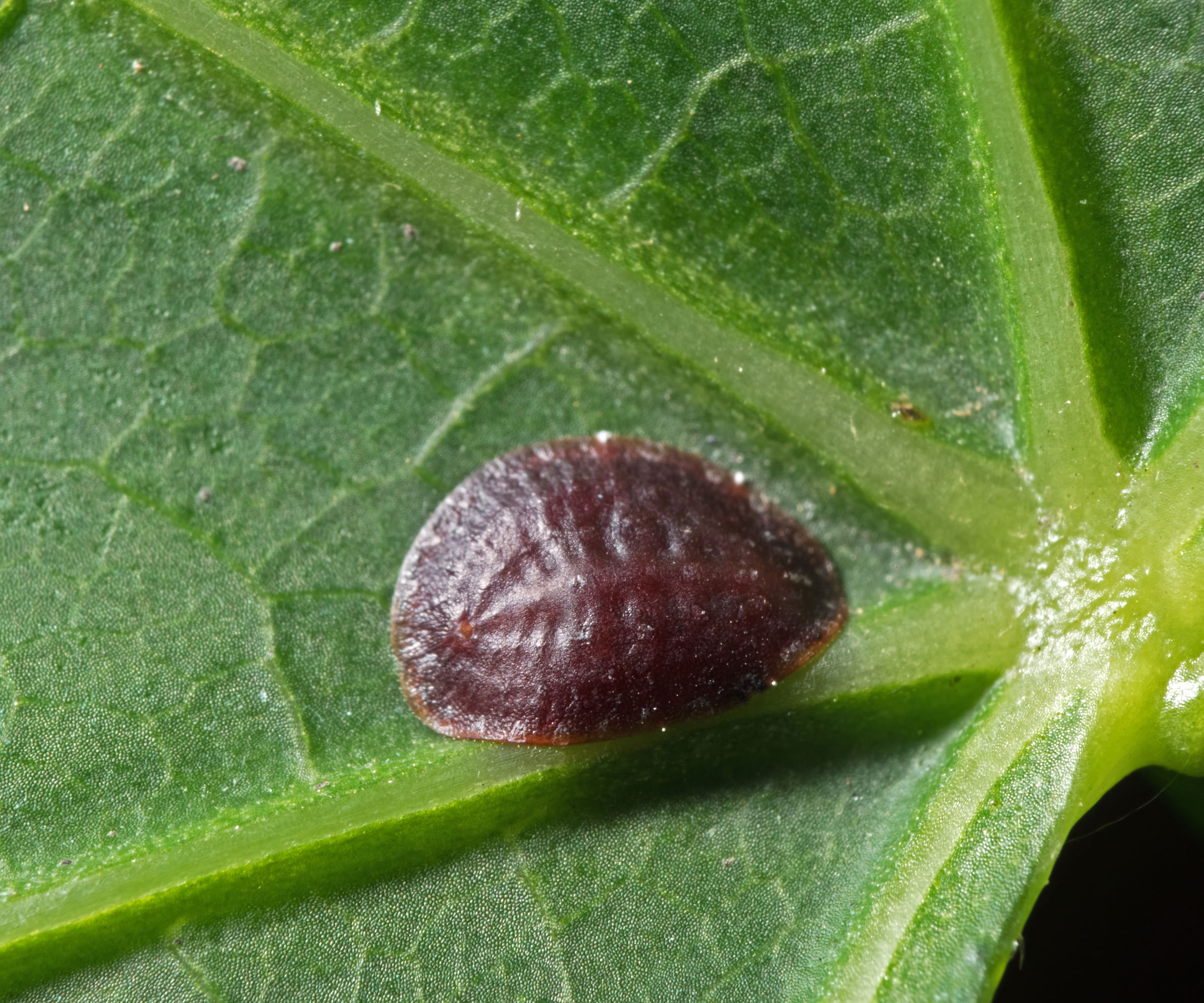
Scale insects are pests that can wreck your plants by sucking their sap, which causes yellowing and leaf drop, and a build up of sticky honeydew that turns to sooty mold. If the infestation is bad enough weakened plants will eventually die.
These tiny plant pests affect many varieties of fruit, as well as ornamental shrubs and trees, and are found throughout North America. The female insects look like bumps on stems, fruit, and leaves, while males are tiny flying insects.
Encourage scale insect predators such as lacewings to keep down the population. To treat a bad infestation, it's best to get rid of affected plants. A form of biological control is scrubbing the scale insects with a soft brush and soapy water, then rinsing well. You can also deal with individual scale insects by simply wiping them off the plant with a damp cloth or sponge.
8. Leaf miners
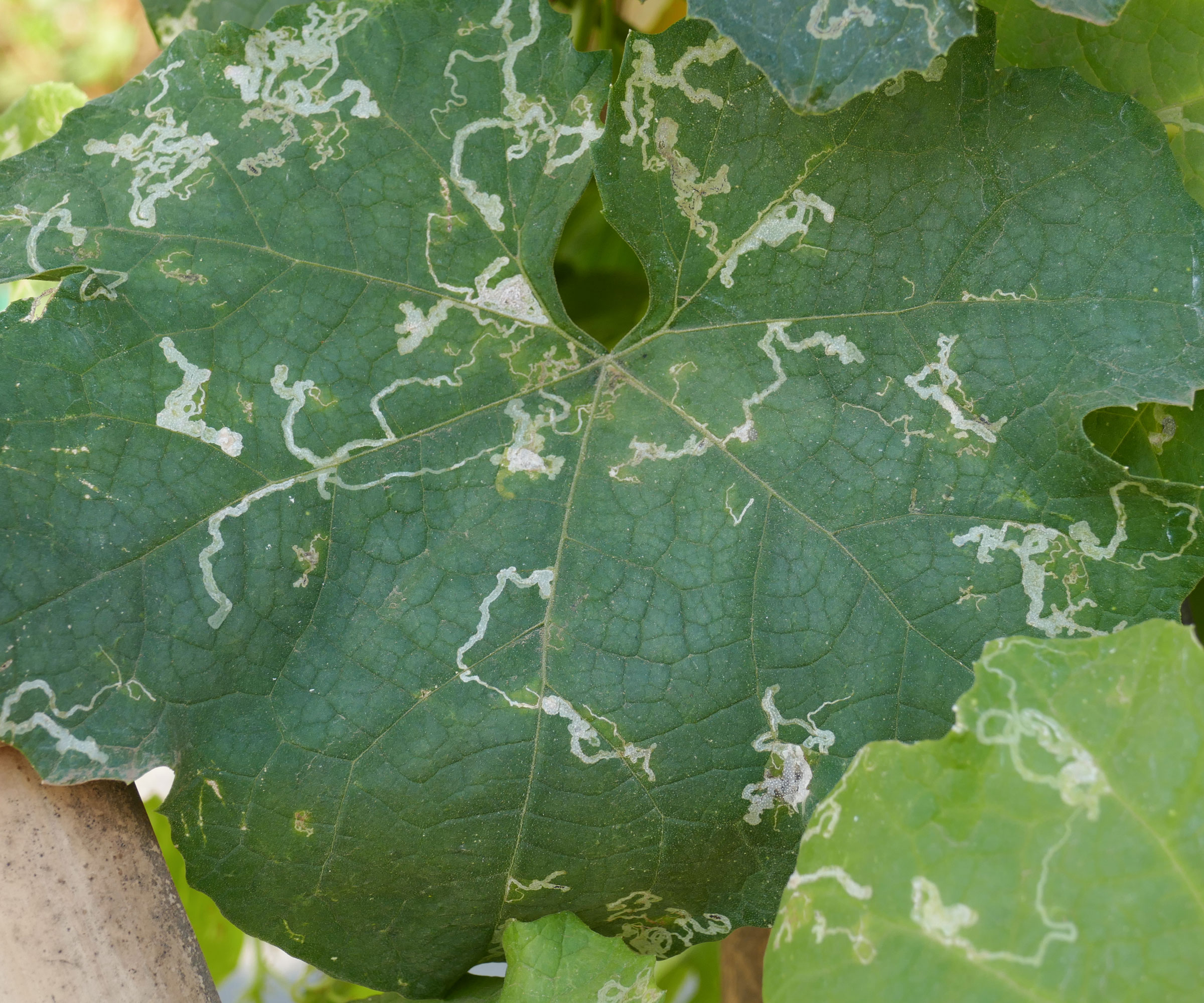
The larvae of these insects tunnel inside the leaves of vegetable plants, and particularly love spinach and Swiss chard, but are also partial to tomatoes, cucumbers and squash. They are active during early spring and summer, feeding on plant tissue and leaving visible trails on leaves that are easy to spot.
'Leaf miners are notorious for laying a cluster of tiny white eggs on the underside or even in the folds or curls of leaves, making them hard to find,' says Resh Gala. 'To counteract this check regularly for lurking pests and eggs. If you find any leaf miner eggs make sure you immediately scrape them off. You can also use sticky tape to get the eggs off the leaves.'
Alternatively try row covers to stop miner insects laying their eggs on your plants, as well as making your own neem oil spray, or buying a neem oil spray like this one from Amazon.
FAQs
Is it true climate change means more plant pests?
Yes, experts say it's likely that climate change will mean more plant pests. It will alter the stages and rates of development of plant pests, as well as modifying the resistance of host plants. This means that not only will there will be more pests that can wreck your plants but plants will also struggle to cope with them.
'Insects have short life cycles, high mobility, and high reproductive potential which means they can quickly take advantage of and adapt to new climatic conditions and expand their ranges, according to a report from the experts at the Royal Botanic Gardens at Kew in London, UK.
'Temperature is expected to have significant effects, increasing winter survival, extending the summer season and possibly influencing population density. Milder winters mean pests will have a head start, while increased temperatures in spring mean pests become active sooner, for longer and with shorter intervals between generations.'
Since you're here you may also want to find out about slug control methods and how to get rid of slugs as well as how to get rid of snails to stop them destroying your plants, as these slippery little critters are equally as important in the battle against pests that can wreck your plants .







